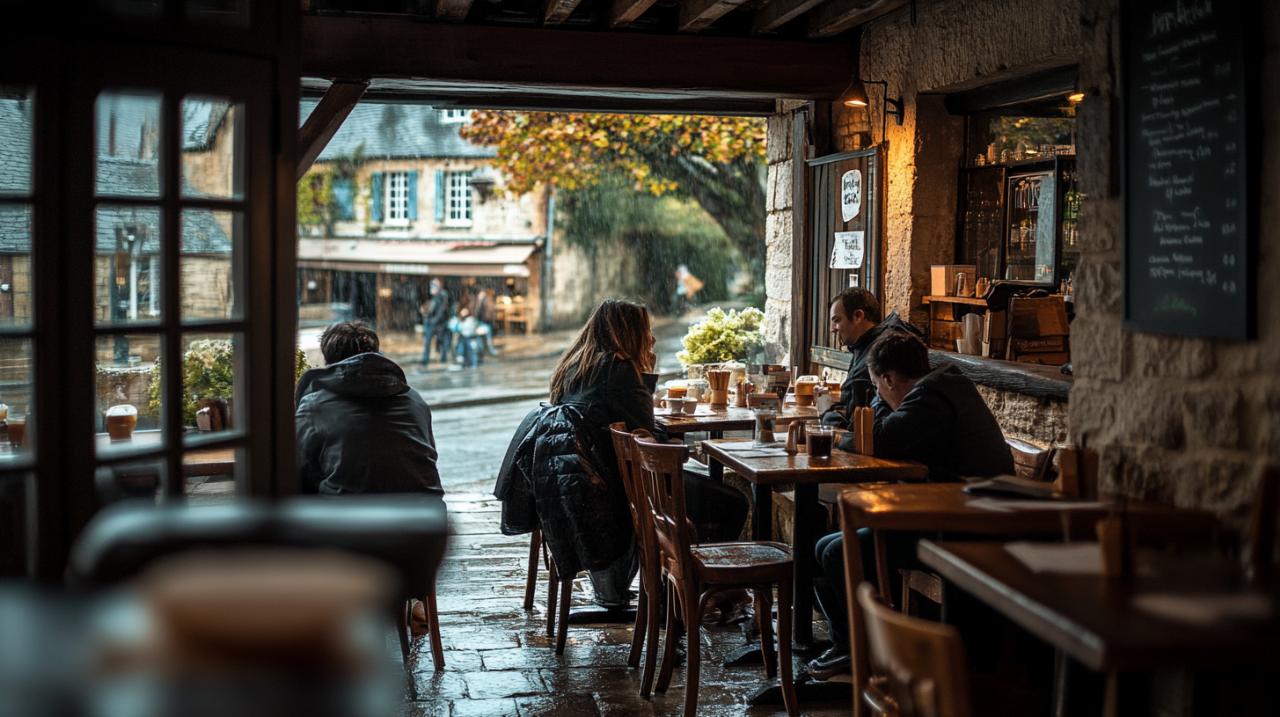Canada isn't just a paradise of breathtaking landscapes and friendly locals—it's a culinary wonderland waiting to be explored. From coast to coast, this vast nation serves up a smorgasbord of flavours that tell the story of its diverse heritage, innovative chefs, and bountiful natural resources. Whether you're a dedicated foodie or simply someone who enjoys a good meal, Canada's mouthwatering food trails offer an authentic way to experience the country's culture through its cuisine.
Canadian Culinary Hotspots from Coast to Coast
Embarking on a culinary journey across Canada reveals how geography, climate, and cultural influences have shaped distinctive regional food identities. Each province boasts its own gastronomic treasures, creating an edible map that food tourists can navigate with delicious results. The country's vast size means that culinary trails offer an organized way to sample the best of Canadian food without missing the highlights.
Maritime Seafood Treasures in the East
The eastern provinces are a seafood lover's dream, particularly Nova Scotia with its renowned Seafood Trail featuring 85 different experiences. Visitors can track their maritime culinary adventures using a special passport system that encourages exploration of the coastline's delicacies. Nearby Prince Edward Island has developed an impressive Culinary Trail with six themed routes focusing on fishers, restaurants, authentic PEI products, culinary adventures, local markets, and farmers. Alternatively, food tourists can explore five distinct geographical regions, each offering its own take on the island's famous fresh seafood and farm produce.
Pacific northwest fusion in british columbia
On the opposite coast, British Columbia offers a completely different culinary landscape dominated by Asian influences and abundant local ingredients. The Okanagan Valley stands out as a premier wine region housing approximately 200 wineries. In Kelowna alone, enthusiasts can explore five distinct Wine Trails: Lakeshore, Westside, Scenic Sip, and the Fab Five, each showcasing unique terroir and wine styles. Vancouver Island contributes to the sweet side of British Columbia's food fame as the birthplace of the iconic Nanaimo Bar, a triple-layered no-bake treat that has become a national dessert symbol.
Indigenous food traditions and modern interpretations
The culinary heritage of Canada cannot be properly understood without acknowledging the foundational contributions of its First Nations peoples. Indigenous food traditions that once sustained communities for thousands of years are experiencing a renaissance, with chefs across the country incorporating traditional ingredients and cooking methods into contemporary cuisine.
First nations gastronomy: ancient techniques reimagined
Indigenous culinary traditions honor a deep connection to the land, with techniques like smoking, drying, and fermenting that maximized food preservation in harsh climates. Today, innovative chefs are reimagining these ancient methods for modern palates. In Winnipeg, Manitoba, the Homegrown Trail showcases local fare in restaurants that often feature indigenous ingredients like pickerel, bison, Arctic char, and wild rice. These establishments honor traditional food sources while creating exciting new flavor combinations that respect cultural heritage.
Foraging adventures: wild ingredients in contemporary cuisine
The practice of foraging for wild ingredients represents another aspect of indigenous food wisdom that has found new appreciation in contemporary Canadian cuisine. Across the country, chefs are incorporating foraged elements like Saskatoon berries, mushrooms, and wild herbs into sophisticated dishes. Manitoba chefs particularly excel at experimenting with foraged ingredients, creating distinctive cuisine from the bounty of the prairies. These wild foods not only connect diners to the landscape but also provide unique flavors impossible to cultivate commercially.
Sweet temptations beyond maple syrup
While maple syrup remains Canada's most famous sweet export, the country offers an impressive array of desserts and sweet treats that deserve equal recognition. Regional specialties showcase local ingredients and cultural influences that have evolved into distinctive Canadian creations.
Quebec's patisserie paradise
Quebec stands as Canada's undisputed sweet spot, blending French patisserie traditions with North American influences. The province boasts an impressive cheese culture with over 300 varieties, many featured on dedicated cheese tasting routes that showcase artisanal producers. Beyond cheese, Quebec offers remarkable desserts in both Montreal's sophisticated restaurants and rural farm-to-table establishments. The culinary prestige of the province is evident in Montreal's dominance of Canada's Best 100 Restaurants list, with 25 establishments making the cut. The surrounding regions of Montérégie are famous for apple orchards and the distinctive ice cider, a sweet alcoholic beverage unique to the region.
Iconic canadian desserts worth the journey
Beyond Quebec, sweet-toothed travelers can discover regional desserts that have become national treasures. Ontario's Mennonite country offers visitors a taste of simpler times with handmade goods and the famous butter tarts, sweet pastry shells filled with a rich mixture of butter, sugar, syrup, and eggs. On the west coast, the aforementioned Nanaimo Bars from Vancouver Island feature a chocolate ganache top, custard middle, and coconut-graham cracker base that has achieved cult status among dessert aficionados. These treats aren't merely desserts but edible cultural artifacts representing local traditions and ingenuity.
Beverage routes: from craft beer to ice wine
Canada's beverage culture has exploded in recent decades, with craft breweries, wineries, and distilleries creating distinctive drinks that reflect local ingredients and tastes. Following beverage routes offers visitors a chance to experience the landscape through its liquid expressions.
Brewery tours in urban centres
Canadian cities have embraced the craft beer movement with enthusiasm, establishing brewery districts and tours that showcase local brewing talent. Montreal alone hosts numerous beer-focused events, including a dedicated craft beer festival that celebrates Quebec's brewing heritage. The urban brewing scene extends across the country, with each city developing distinctive styles reflecting local preferences and ingredients. These brewery tours often include food pairings that highlight regional gastronomy, creating a comprehensive taste experience.
Niagara and okanagan valley wine experiences
Wine tourism has become a significant draw for regions with suitable growing conditions. Prince Edward County near Toronto has developed the Taste Trail featuring not just vineyards but also producers of artisan ice cream, cider, spirits, craft beer, and field-to-table fare. In western Canada, the Okanagan Valley has established itself as a world-class wine destination. Meanwhile, Alberta has carved out its own niche with fruit wines crafted from local flowers, apples, honey, and wild cherries, alongside mead, an ancient fermented honey beverage experiencing renewed popularity. For an immersive experience, visitors can combine culinary and active tourism by cycling the Véloroute Gourmande in Quebec, which connects food producers along a scenic route.
Whether you're sampling seafood on the Atlantic coast, exploring indigenous ingredients on the prairies, indulging in Quebec's sweet creations, or sipping wines in sun-drenched valleys, Canada's food trails offer delicious insights into the nation's soul. Each bite and sip tells a story of place, people, and passion that makes culinary tourism one of the most rewarding ways to discover the Great White North.
Farm-to-table experiences: rural gastronomy adventures
 Canada's vast landscape offers a paradise for food enthusiasts, with the farm-to-table movement flourishing across the Great White North. From coast to coast, culinary trails showcase the rich tapestry of regional cuisines and local ingredients that make Canadian gastronomy truly exceptional. These rural food experiences connect visitors directly with farmers, producers, and chefs who are passionate about transforming local produce into memorable dining experiences.
Canada's vast landscape offers a paradise for food enthusiasts, with the farm-to-table movement flourishing across the Great White North. From coast to coast, culinary trails showcase the rich tapestry of regional cuisines and local ingredients that make Canadian gastronomy truly exceptional. These rural food experiences connect visitors directly with farmers, producers, and chefs who are passionate about transforming local produce into memorable dining experiences.
Agritourism gems across the provinces
Each Canadian province boasts its own unique agritourism treasures that reflect the local terroir and culinary heritage. In Prince Edward Island, the renowned Culinary Trail presents six distinct pathways for food lovers—Fishers, Restaurants, Authentic PEI Products, Culinary Adventures, Local Markets, and Farmers—allowing visitors to tailor their gastronomic journey to their interests.
Quebec stands as a cheese lover's dream with over 300 varieties to sample along dedicated cheese tasting routes. The province also excels in farm-based experiences, with Tables Champêtres offering authentic meals served on working farms, where you can connect with the people who grow your food.
Ontario's Mennonite country provides a glimpse into a simpler way of life, complete with handmade goods, fresh produce, and the iconic butter tart—a Canadian sweet treat not to be missed. Just a short drive from Toronto, Prince Edward County's Taste Trail delights with artisan ice cream, craft cider, spirits, wine, and field-to-table fare at local farms and vineyards.
The wine enthusiast will find nirvana in British Columbia's Okanagan Valley, home to 200 wineries. In Kelowna alone, five distinct Wine Trails—including Lakeshore, Westside, and Scenic Sip—offer splendid tastings amidst breathtaking scenery.
For those keen on regional specialties, Manitoba's capital, Winnipeg, presents the Homegrown Trail, where restaurants showcase local ingredients like pickerel, bison, Arctic char, wild rice, and foraged berries. Meanwhile, Alberta delights with fruit wines crafted from local flowers, apples, honey, and wild cherries, as well as mead—an ancient fermented honey beverage with a modern Canadian twist.
Seasonal food festivals and harvest celebrations
Canada's agricultural rhythm beats strongest during its vibrant seasonal food festivals, where communities gather to celebrate the bounty of the land. Montreal alone hosts over 500 festivals throughout the year, including numerous food-focused events and a craft beer festival that draws enthusiasts from across the country.
In Quebec's rural regions, seasonal celebrations showcase the agricultural heritage that defines local cuisine. Montérégie's apple orchards become bustling hubs during harvest season, with festivals celebrating the region's famed ice cider. The Eastern Townships, with their 30-plus vineyards and microbreweries, host seasonal tastings that coincide with the grape harvest.
For active food tourists, the Véloroute Gourmande in Quebec offers a brilliant way to work up an appetite between tastings, with cycling routes connecting artisanal food producers. This combination of outdoor activity and culinary exploration epitomises the Canadian approach to food tourism—connecting with the land that produces the ingredients.
Nova Scotia's Seafood Trail presents 85 distinct experiences that shift with the seasons, allowing visitors to track their gustatory adventures with a special passport. From spring lobster festivals to autumn oyster shucking competitions, the maritime provinces celebrate their coastal bounty year-round.
For those seeking an immersive experience, Laval's 200 farms offer seasonal agritourism opportunities where visitors can pick their own fruits and vegetables at the peak of ripeness. These hands-on experiences provide a deeper appreciation for Canadian agriculture and the farm-to-table philosophy that drives the country's most innovative culinary experiences.







